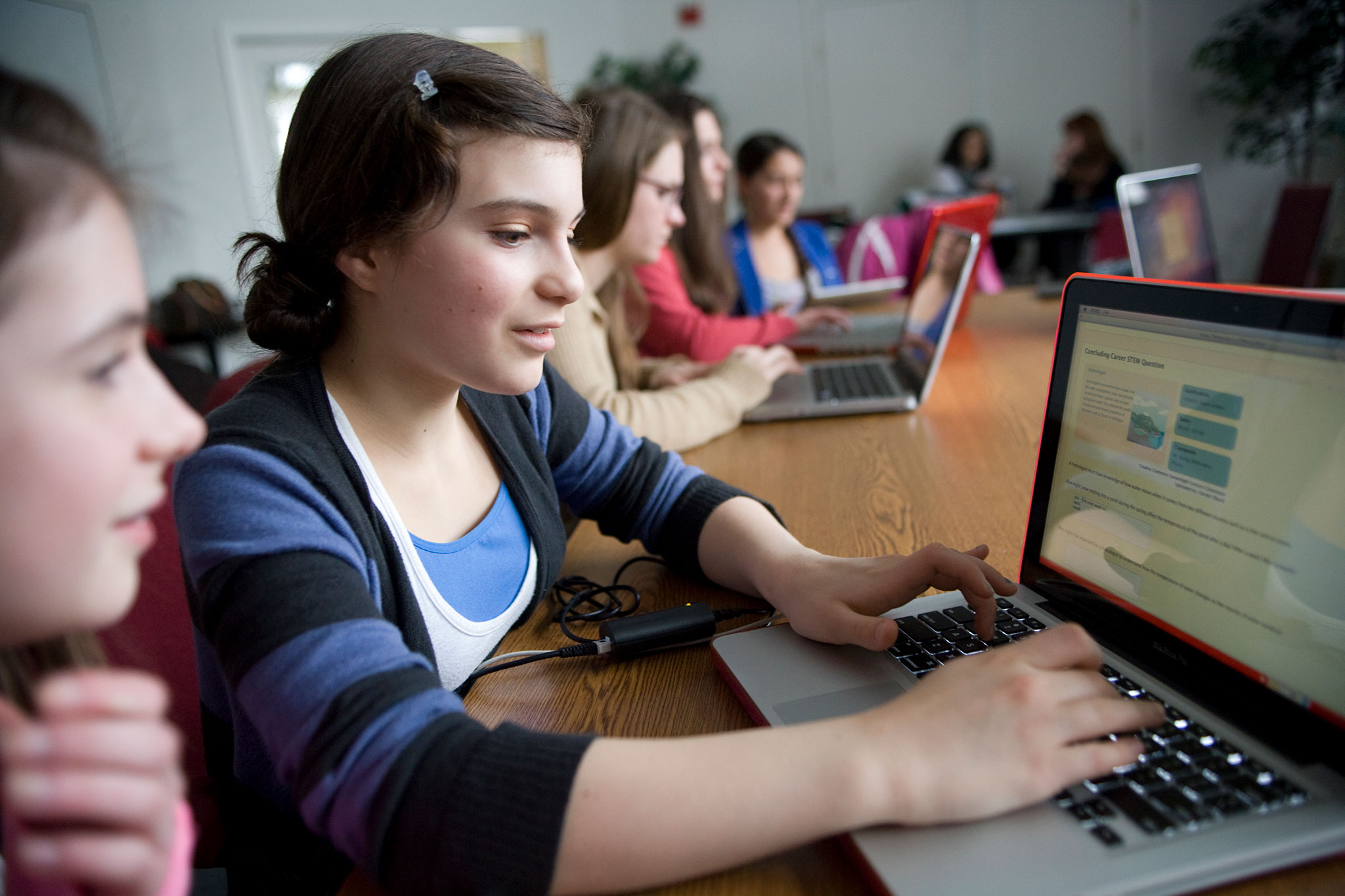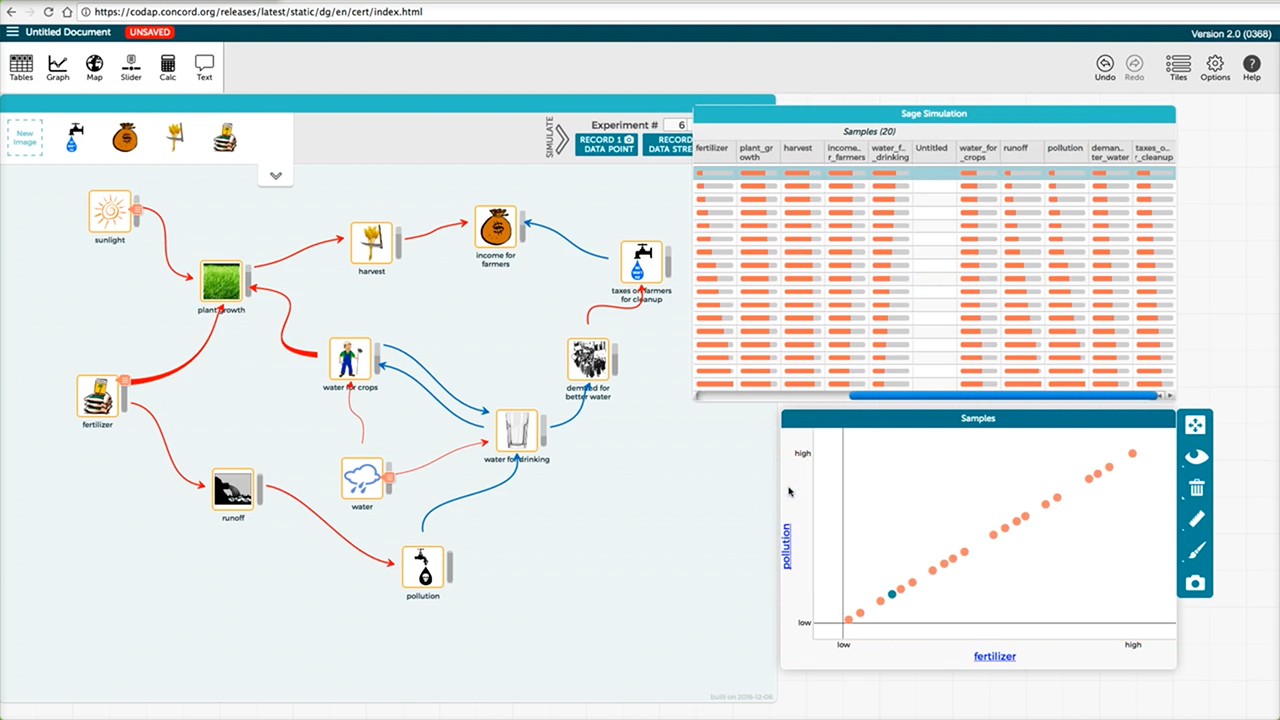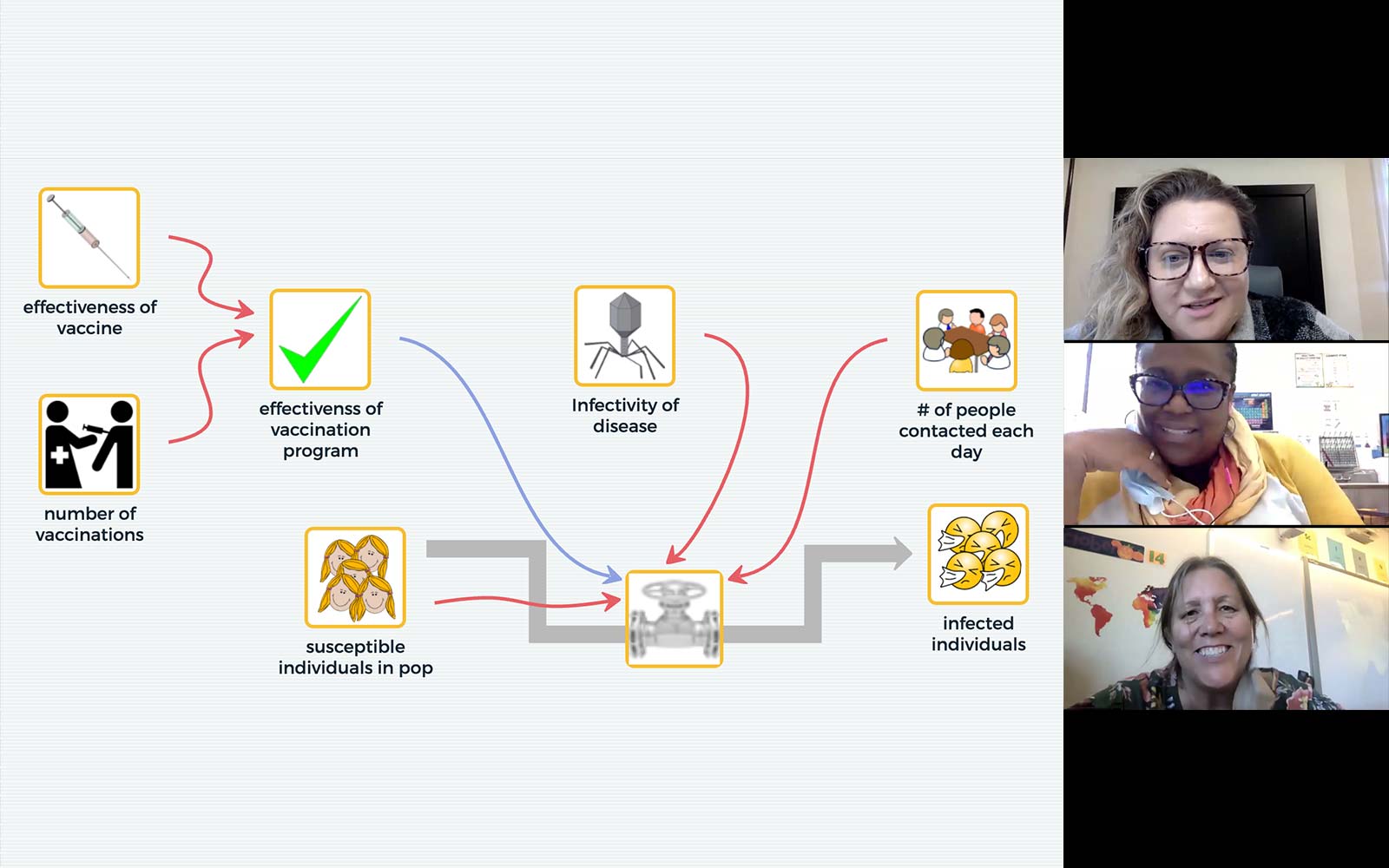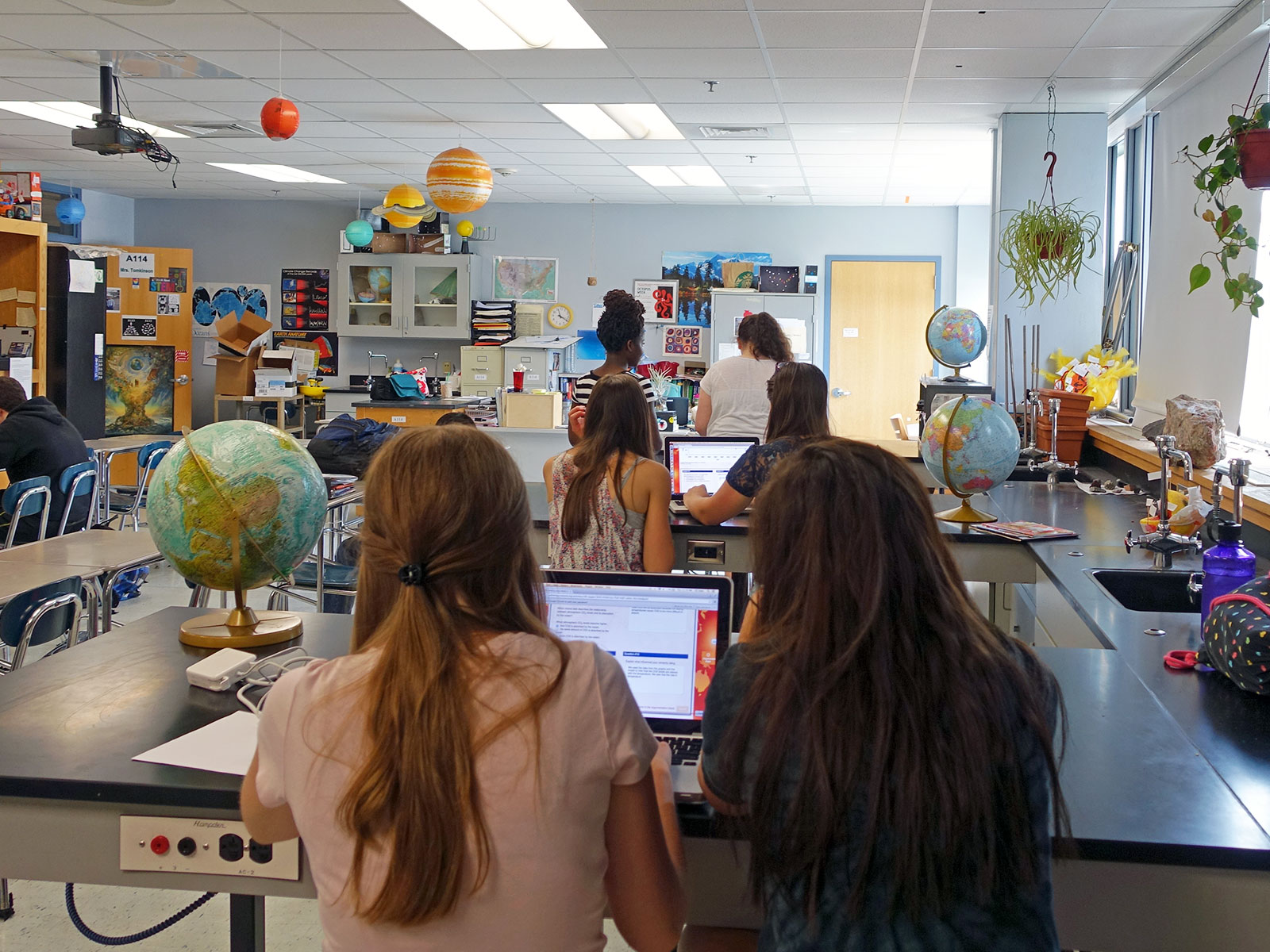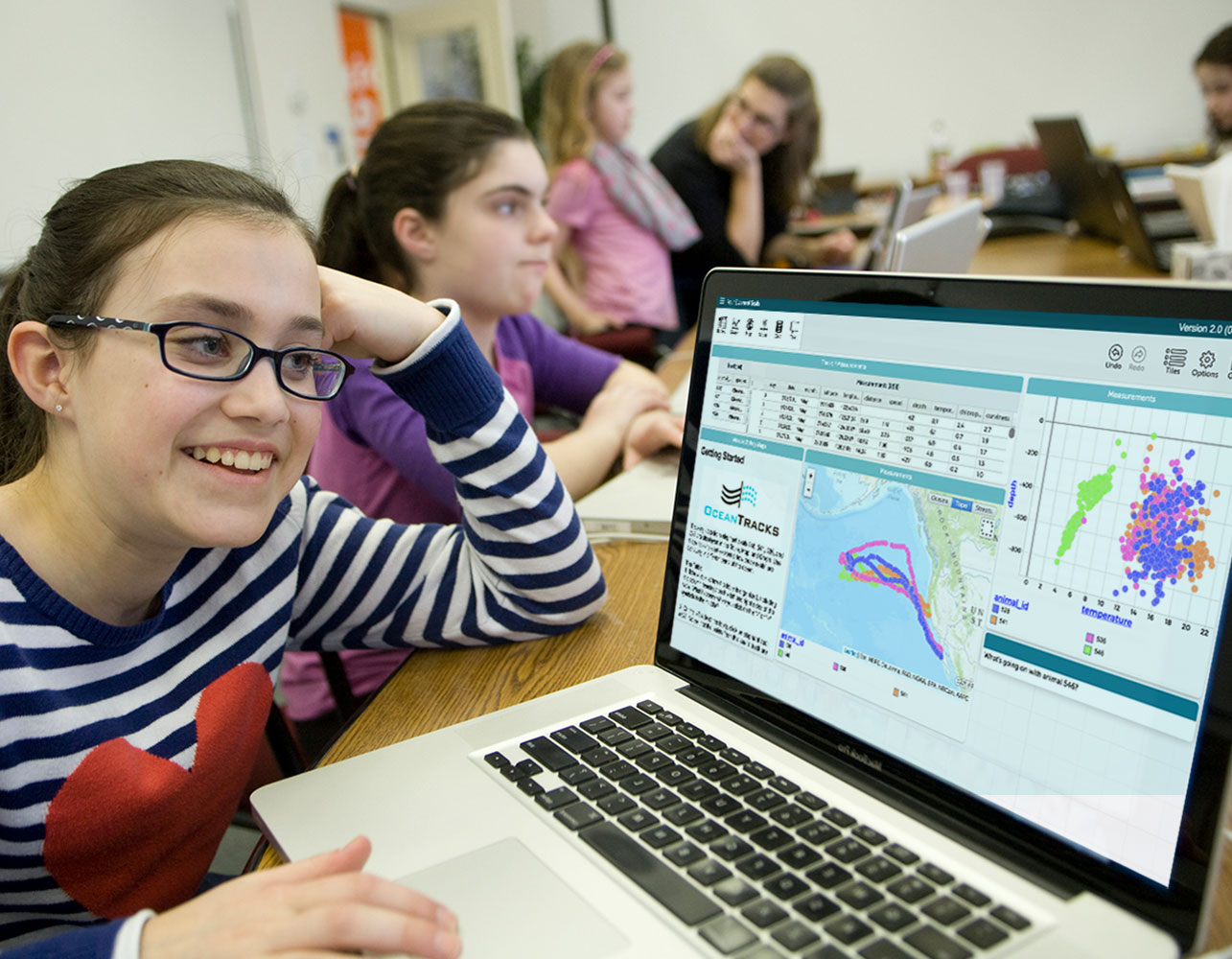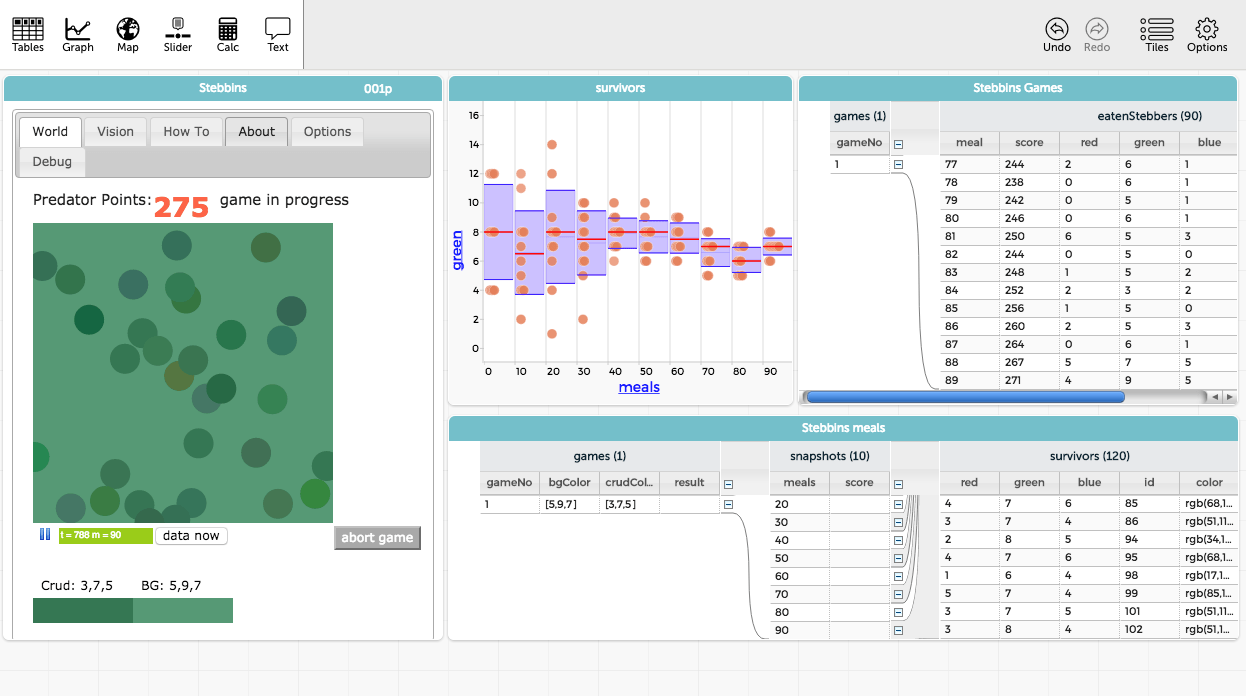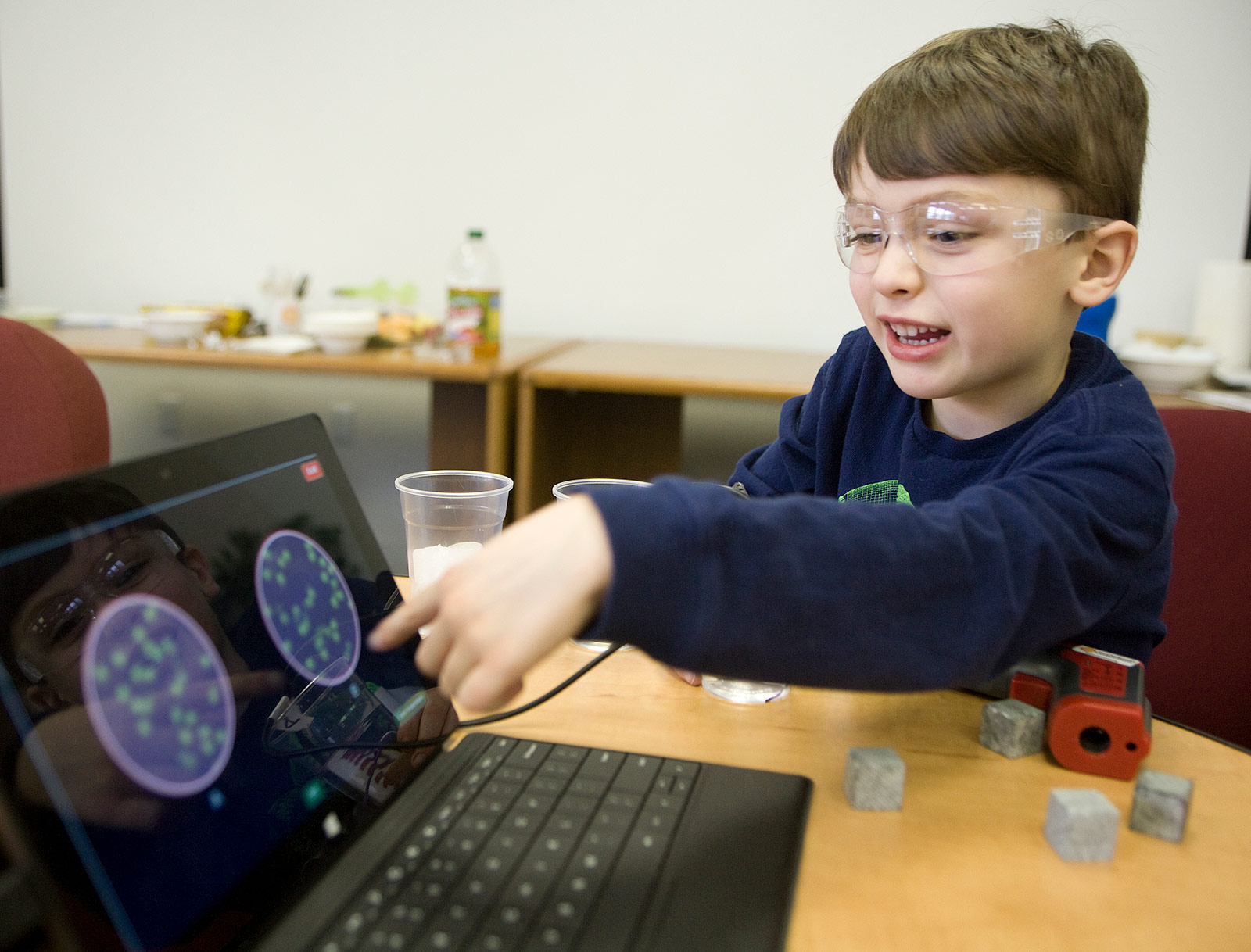Building Models
Importance
Modeling, a central practice used in all science disciplines, is essential to the pursuit of scientific knowledge. Scientists develop, revise, and use models of relationships between variables to provide a predictive or causal account of scientific phenomena; engineers build models to test and revise design solutions. A Framework for K-12 Science Education and the Next Generation Science Standards (NGSS) identify modeling as one of eight science and engineering practices. Indeed, students should engage in modeling to learn and use the same practices scientists and engineers regularly employ.
We’re collaborating with Michigan State University to examine how to support secondary school students in constructing and revising models based on disciplinary core ideas and crosscutting concepts to explain scientific phenomena and solve problems. We’re designing, developing, and testing a systems dynamics modeling tool called SageModeler to facilitate the building of dynamic models.
We’ve created SageModeler, a free, web-based systems dynamics modeling tool for secondary school students to construct dynamic models and validate their models by comparing outputs from their own models and data from one or more other sources, including experimental data from probes or data generated by simulations. We’re engaging learners in three-dimensional learning by using crosscutting concepts (systems and systems modeling, cause and effect, and energy and matter) with various scientific practices (particularly modeling, but also analyzing and interpreting data and engaging in argument with evidence), integrated with disciplinary core ideas.
To facilitate model validation, SageModeler and all external data sources are embedded in our Common Online Data Analysis Platform (CODAP). CODAP is an intuitive graphing and data analysis platform that takes the outputs from the system dynamics models, as well as any other validating data source, and blends them into a single analytic environment.
Research
We’re studying the effect of working with external models on student construction of internal mental models by examining the quality of student-created models, the potential of these models to provide feedback on students’ understanding of a range of disciplinary core ideas, and the development of students’ modeling capabilities.
Videos
View this video and more on the Concord Consortium YouTube Channel.
Publications
- Bielik, T., Stephens, L., Damelin, D., & Krajcik, J. (2019). Designing technology environments to support student modeling practice. In A. Upmeier zu Belzen, D. Krüger, & J. van Driel (Eds.), Towards a competence-based view on models and modeling in science education. (pp. 275-290). Springer International Publishing.
- Bielik, T., Damelin, D., & Krajcik, J. S. (2019). Shifting the balance: Engaging students in using a modeling tool to learn about ocean acidification. EURASIA Journal of Mathematics, Science and Technology Education.
- Bielik, T., Damelin, D., & Krajcik, J. S. (2018). Why do fishermen need forests? developing a project-based learning unit with an engaging driving question. Science Scope.
- Damelin, D., Krajcik, J. S., McIntyre, C., & Bielik, T. (2017). Students making systems models: An accessible approach. Science Scope. (Versión en Español: Estudiantes crean modelos de sistemas.)
- Damelin, D., & Krajcik, J. (2016). Supporting secondary students in building external models to explain phenomena. @Concord, 20(1), 10-11.
- Damelin, D. (2016). Monday’s lesson: Students making models. @Concord, 20(2), 7.
Activities
View, launch, and assign activities developed by this project at the STEM Resource Finder.
